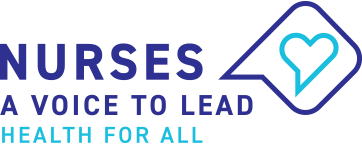Treating epilepsy in children using a ketogenic diet
In Maastricht in The Netherlands we have set up a multidisciplinary outpatient for treating children with epilepsy with the ketogenic diet. The children have three-monthly appointments and in between they and their parents are supported by phone or video consultation.
Epilepsy is the most common neurological condition in children, consisting of unprovoked and recurrent seizures. The prevalence of active epilepsy is 5.1 per 1,000 schoolchildren. Growing up with epilepsy is challenging because of the condition can have a significant impact on daily life. Sometimes the children and young people we see have behavioral problems, depression and anxiety, and they can also be confronted with cognitive problems and academic challenges. Treatment with antiepileptic drugs can also be problematic and produce cognitive problems. Young people with the condition worry about having seizures, and this can limit social activities and cause them to be socially isolated. Sometimes parents and other caregivers can be anxious and (over)protective, which can hamper the child’s development of autonomy.
Glucose is the most important energy carrier of the brain. Glucose transporter type 1 is located at the blood-brain barrier and assures the energy-independent, facilitative transport of glucose into the brain. The Glut1 deficiency syndrome is associated with a broad spectrum of epilepsies and movement disorders.
The Ketogenic diet is the precision therapy for Glut1 deficiency syndrome. The very low carbohydrate, high fat diet changes the metabolism in the body from burning glucose for energy to burning fat to energy. But following the diet can be very challenging for both children and their caregivers.
The ‘Skills for Growing Up-Epilepsy’ tool (SGU-Epilepsy) is an age-specific communication tool to support children and young people with epilepsy to develop autonomy in daily functioning. It is an item-list addressing nine domains for young people and their parents: me, healthcare, relationships, study, work, living, transport, leisure and sport. The SGU-Epilepsy can be used for young people aged between seven and 17-plus, and their parents. There is also a version for people with an intellectual disability aged between 7 and 21-plus, and their parents.
Eight year-old Carol is a child with the diagnosis of epilepsy. From the age of two she had absences and myoclonic seizures. Sometimes she had tonic-clonic seizures and would fall to the ground. When she was seven she was diagnosed with glucose transporter type 1 (GlUT1) deficiency syndrome. The best treatment for this condition is a ketogenic diet, which is low in carbohydrates and high in fat. This is a very difficult diet to manage but use of the communication tool SGU-Epilepsy was very helpful for the whole family.
Carol was prescribed antiepileptic medication but it did not help. When she was six she went to the Academic Centre of Epileptology at Kempenhaeghe, a tertiary epilepsy centre in the south of the Netherlands, for more diagnostic research and better treatment.
When I met Carol she had a daily average of 100 myoclonic seizures in her shoulders and sometimes she fell on the ground, especially in the mornings. She stayed in our hospital for three days of observation and had a 24-hour video-electro encephalogram, and psychological and school evaluations. After a further diagnostic work-up the diagnosis GLUT1 deficiency syndrome was made. She was also found to have a slight intellectual impairment, so special education and support for the parents was advised.
One year ago she started a medical ketogenic diet. She visits the hospital every three months to have a combined consultation with the neurologist, dietitian, paediatrician and nurse practitioner, and for routine physiological tests and an electrocardiogram.
For the parents of children on the diet it is a challenge to prepare the right food and to be consistent. For Carol it is hard to keep to the diet, especially when she at school or at her friends’ birthday parties. Carol does not always want the different food and the special Liquigen shake she is supposed to drink, which is a fat drink with special nutrient ingredients. But she realises that her seizures are gone and her concentration at school is much better when she follows the diet, and that her seizures return if she does not keep to it.
It is clear that epilepsy negatively impacts Carol’s physical health, psychosocial and cognitive functioning, and puts pressure on the child-parent relationship. My experiences as a nurse and advocate using the SGU-Epilepsy tool are that children and young people with epilepsy are encouraged to talk with their parents about several subjects and can make appointments to stimulate their autonomy. Parents can give their child responsibility and can take steps to let their child develop.

